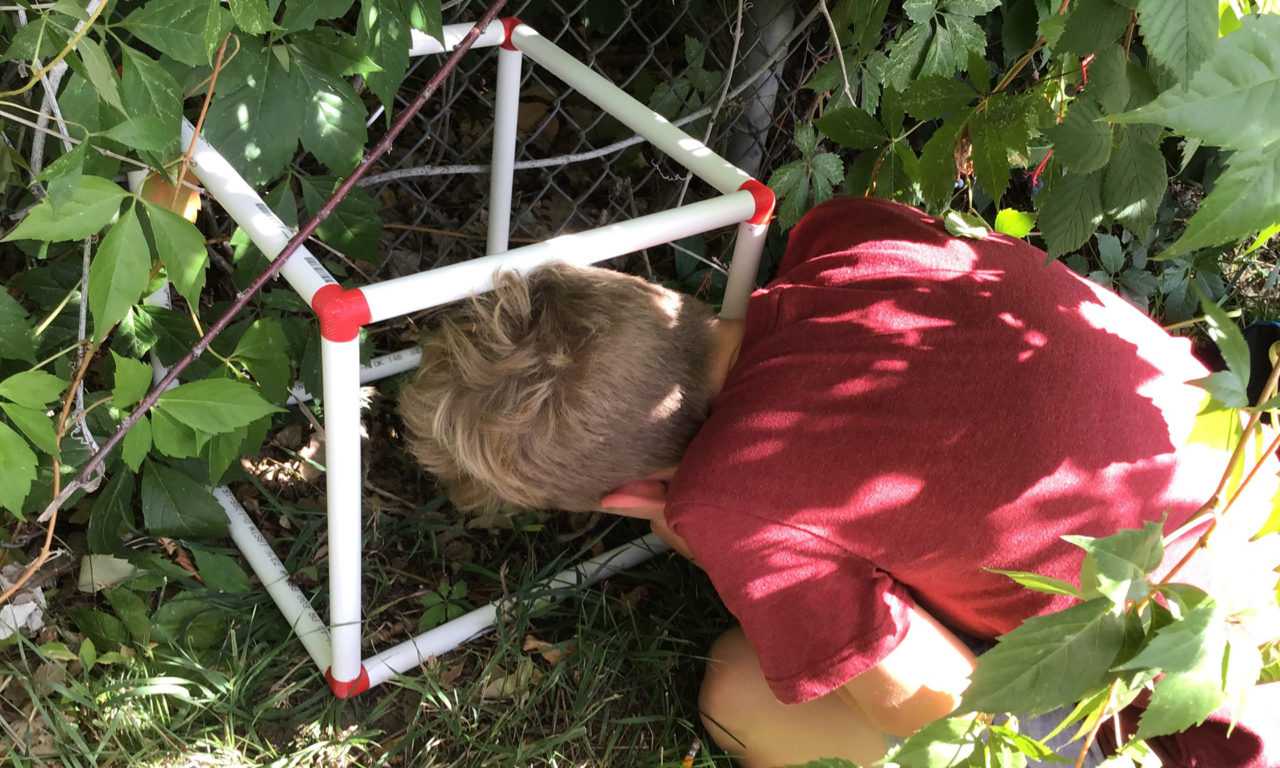Are you looking for a different kind of outdoor activity to do with your family during these socially distanced times? Here’s a simple idea that family members of any age can do together.
I first heard of the Biocube Project when I visited the Smithsonian National Museum of Natural History a couple of years ago. As Hygiene Elementary’s Science, Technology, Engineering, the Arts and Mathematics (STEAM) Coordinator, I thought it was a perfect way to engage our elementary students and families in being citizen scientists in our Boulder County open spaces.
The Biocube Project is a fun way to learn about the biodiversity in our world. Students are encouraged to build an open-sided cube, place it outside, and observe the cubic foot of space over time. They then share their observations and make connections to the larger ecosystem.
I collaborated with Jill Johnston, Hygiene Elementary’s Library Media Tech, Dr. Mikki McComb-Kobza, Executive Director of the Ocean First Institute in Boulder and parent of a Hygiene Elementary student, and Deborah Price, with Boulder County Parks & Open Space, to bring this project to Hygiene Elementary students and families. We were granted permission in December 2019 to place two biocubes at Pella Crossing and, together, decided where to place them. We also built one biocube per grade level for students to monitor on our school grounds. Additionally, in the fall of 2020, I extended this project to my St. Vrain LaunchED Virtual Academy third- and fourth-grade students, who committed to online learning for the entire 2020-21 school year.
For the past 14 months, our elementary students have been documenting observations of their biocubes. They were encouraged to focus on everything they observe. How is that leaf important to our location on Earth? Did you notice the bite marks on it from the insects? Why is there a hole in the ground today? What animal might live there now? What new fauna is growing? Ms. Johnston shared, “It helps to make the kids aware that the biocube space is connected to the local ecosystem and, therefore, Earth’s ecosystem.”
This project can easily be done by your family. My fourth-grade student, Sophia Bosica says, “This was the most fun that I have done and I have had a great few months doing this!” Choose an interesting location to observe in your community. You can also build your own biocube to place in your own yard, since no permission is required. For each observation, note the weather conditions, describe what you see or perhaps what is missing since the last viewing. Make an observation at least once a month. If you are able to find evidence of wildlife, upload your findings to inaturalist.org.
Dr. McComb-Kobza recently shared with me, “This project exposes young people to nature, to monitoring wildlife, collecting data, and understanding the importance of preservation. Having Mrs. Legrand champion the Biocube Project is inspiring the next generation of inquisitive, action-oriented conservationists.”
As an educator, I have thoroughly enjoyed giving hundreds of students encouragement to be citizen scientists and foster their curiosity for the world around them. I encourage you to enjoy with your families, the beautiful local parks and open spaces that we are so fortunate to have just outside our front doors.
Sherry Legrand invites educators who want to learn more about the biocube project to email her at legrand_sherry@svvsd.org.
How to Build Your Biocube
More information and directions for building a biocube can be found on Smithsonian’s website.


